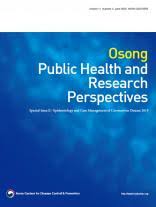Enrolment Phase Results of the Tabari Cohort Study: Comparing Family History, Lipids and Anthropometric Profiles Among Diabetic Patients
Authors
Affiliations
Abstract
Objectives: Different factors are responsible for the silent epidemic of diabetes mellitus in developing and developed countries. This study aimed to determine the role of demographic factors, lipid profile, family history (the estimation of genetic association) and anthropometric factors on diabetes onset.
Methods: Data from the enrolment phase of the Tabari Cohort study was applied for this study and included 10,255 participants aged between 35-70 years. Anthropometric variables were measured by trained staff using standard tools. Blood specimens were collected for lipid profile and blood glucose measurements. Data analyses were performed using SPSS version 24, with univariate and multivariate logistic regression.
Results: The prevalence of diabetes mellitus was estimated to be 17.2% in the cohort population, 15.6% in men, and 18.3% in women. The adjusted odds ratios (95% confidence intervals) for age groups 40-49, 50-59 and over 60 were 2.58 (2.20-3.69), 5.80 (4.51-7.48) and 8.72 (6.67-11.39), respectively. In addition, the odds ratios (95% confidence intervals) for 2 (or more), and 1 affected family member were 4.12 (3.55-4.90) and 2.34 (2.07-2.65), respectively. Triglyceride concentrations more than 500, and abnormal high-density lipoprotein levels increased the odds of diabetes mellitus by 3.29- and 1.18-fold, respectively.
Conclusion: The current study showed that old age and a family history were strong predictors for diabetes mellitus.
Keywords: body mass index; diabetes mellitus; lipids.

